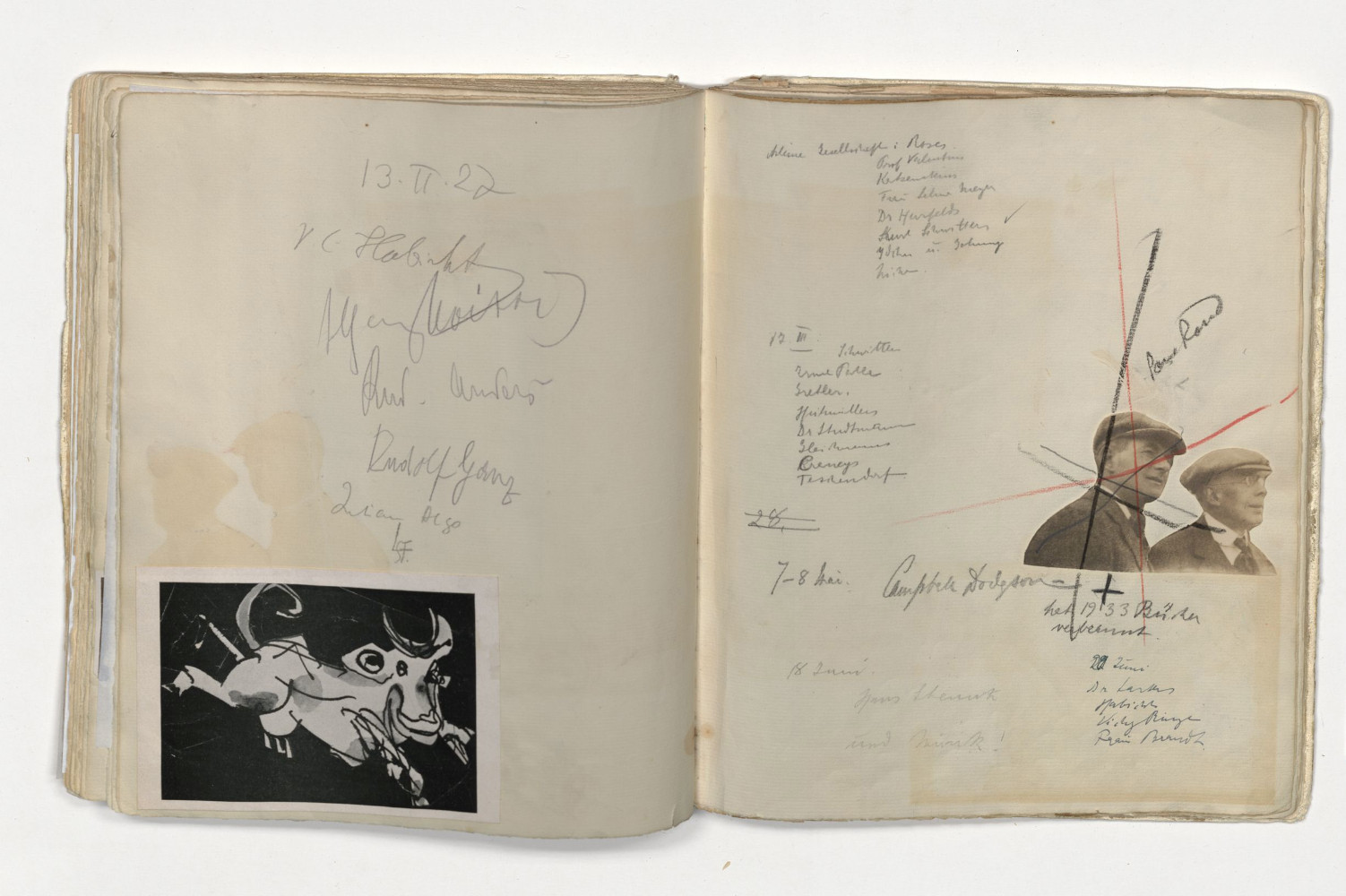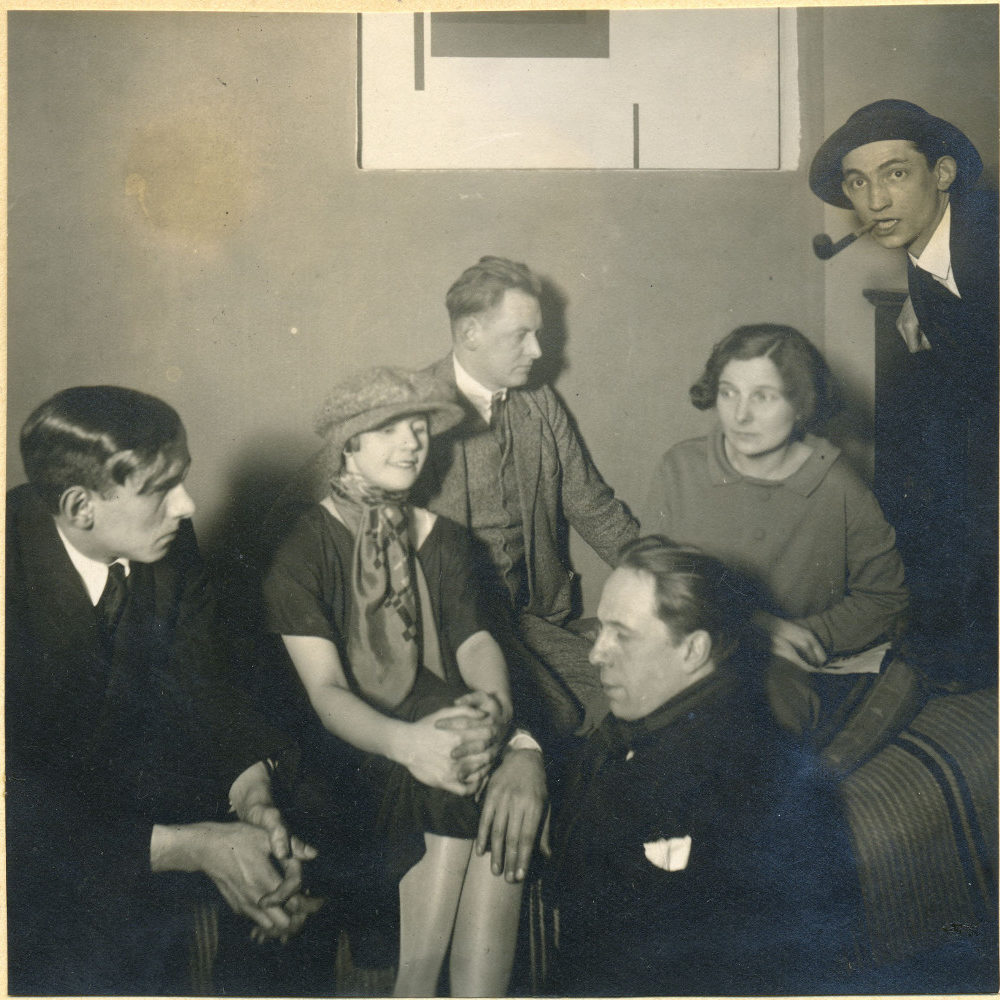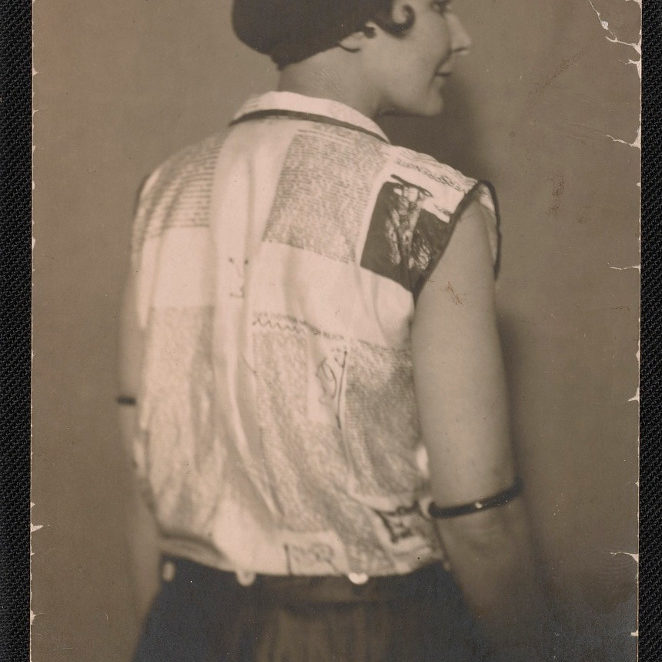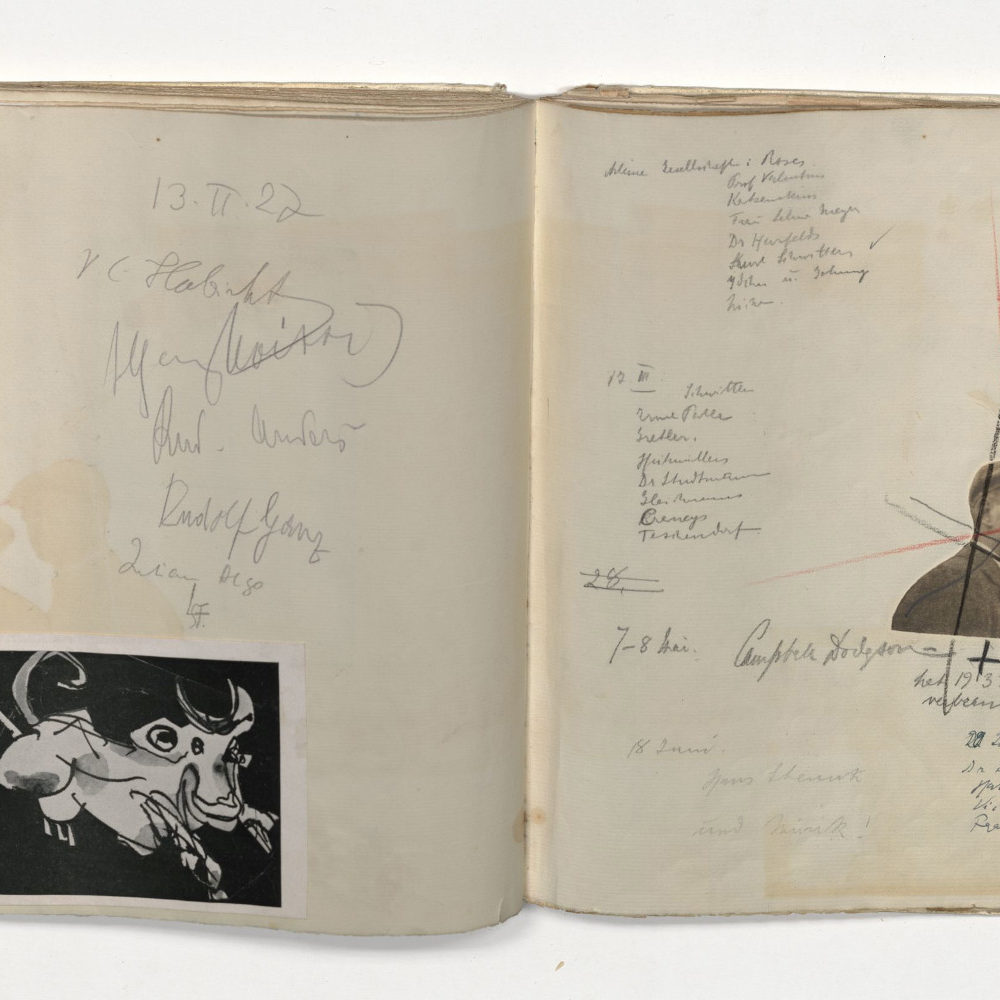Käte Steinitz Art Salon
Kate Steinitz moves to Hanover in 1918 together with her husband. The university-educated art historian soon finds herself the focus of the city’s literary and artistic avant-garde. The guest book of her drawing room in her spacious apartment in Haus Basse reflects the vibrant cultural mood of optimism of the Twenties – even in the provincial metropolis on the River Leine. Today, the building constructed in the 1890s for the private bank Basse is the oldest surviving building on Georgstrasse.

Early contact with modern art
Kate Traumann was born in 1889 in Beuthen (now Bytom in Poland) in Upper Silesia. Like her future husband, she was born into the upper-class Jewish bourgeoisie of the city, where her father was a judge at the regional court. The family moves to Berlin and early on Kate familiarises herself with the latest art trends. Here she draws and paints with Käthe Kollwitz and Lovis Corinth, amongst others, and later studies painting, French and art history at the Sorbonne in Paris. In 1913, she marries Dr. Ernst Steinitz. In 1918, he is appointed head of the military hospitals in Hanover and the family moves to Georgstrasse.
Hanover: a hub of the avant garde
Having moved from Berlin to, comparatively, provincial Hanover, she immediately – in her own words – “scours grey Hanover for splashes of colour”. She soon finds them in the Kestner Society [Kestner-Gesellschaft] and in her productive friendship with the Merz artist Kurt Schwitters. Since the early twenties, Hanover has gradually emerged as a modest but nevertheless vibrant centre of the literary and artistic avant-garde scene. Kate Steinitz soon finds herself at its centre: as artist, collector, photographer, journalist, publisher, mediator, host…
The children rebel
The Steinitz couple are secular and liberal-minded, but are not involved in (party) politics. Unlike their children. Looking back, the eldest child Ilse describes the sense of latent anti-Semitism and of being an outcast in the girls’ high school. The three sisters react defiantly by involving themselves in the left-wing activities of “Naturfreunde Internationale” “[Friends of Nature”] and the “Sozialistische Arbeiterjugend” [“Young Socialist Workers”]: “We fought against the jingoistic flag wavers and Nazis, for peace and social justice. On 1 May, the Steinitz daughters marched through the city in the blue blouses of the Young Workers. We founded the Socialist Students’ Association [Sozialistische Schülergemeinschaft]. To the horror of our teachers, we refused to sing songs that glorified war”.
Creating children’s books with Kurt Schwitters
Their collaboration as artists begins in 1924 with their debut children’s book. Today, the Dadaist and artistic all-rounder Schwitters is regarded as one of the most influential artists of the early 20th century. The children’s book “Hahnepeter” is written in close collaboration with Kate Steinitz. Schwitters dictates this fantasy story to her in one go directly onto the typewriter, she adds drawings, Schwitters does the graphic design. Their first discerning listeners are Steinitz’s daughters and Schwitters’ son Ernst, who give comments from the nursery. Even more radical, due to it being designed purely in figurative typography [the main characters are drawn using typefaces], was the fairy tale “Die Scheuche” [The Scarecrow], created a year later in collaboration with Theo von Doesburg.
Festivals…
Towards the end of the Weimar Republic, Kate Steinitz organised a number of festivals in partnership with Kurt Schwitters that, in hindsight, seem very much like sitting on a volcano. In January 1928, a fancy-dress festival staged by Hanoverian artists has “Zinnober” [the song Schwittters wrote in collaboration with composer Walter Gieseking] as its theme and leitmotif; in the concert hall on Goethe-Brücke [Goethe Bridge], the crowd sways to Schwitter’s catchy lyrics: “Immer rinn in den Zinnober, immer knüppeldicke rinn” [roughly translates as “Throw throw yourself into the hurly-burly, give give it some stick”]. (It is from here that ten years later, in November 1938, SS cadets who had just been sworn in walk from the concert hall to the burning synagogue in Calenberger Neustadt).
The guestbook
The Steinitz couple keep an open house. This is evidenced by the guestbook that was kept between the years 1920 and 1961 containing numerous entries: signatures, comments, photos and drawings made by the visitors. Most of the entries date from Hanover up to the year of their forced flight in 1936. They read like a Who’s Who of literary and artistic modernism – not only, but especially – in the city of Hanover. Many evenings, after events at the Kestner Society, conclude on Georgstrasse at the salon of the “painter, patron and muse” (Ines Katenhusen).
Some visitors take an unexpected political path. A photo of the Hanoverian art historian, publicist and lecturer at the Technical University of Hanover Curt Habicht in the guest book is subsequently crossed out and annotated: “burned books in 1933”. Habicht had become a party supporter of the National Socialists and was a principal organiser of the book burning at the Bismarck Tower at the Leinemasch [later the Maschsee] on 10 May 1933.
Flight and exile
As early as the end of March 1933, Ernst Steinitz, because he is Jewish, is suspended from Siloah Hospital in the city before being dismissed. In 1935, Kate Steinitz is banned from publishing by the National Socialist Reich Chamber of Culture. In 1935, her husband emigrates to the USA, and she follows him to New York a year later with their children. Following the premature death of her husband in 1942, Kate Steinitz works as a librarian, an art history teacher and artist working in applied arts. She becomes a distinguished researcher on the life and work of Leonardo da Vinci. In 1963, she writes a book in which she recalls her friendship and collaboration with Ernst Schwitters. Kate Steinitz dies in 1975 in Los Angeles, her adopted home.
Since 1995, Käthe-Steinitz-Strasse, a small street in the district of Gross-Buchholz, has commemorated the artist. Her artistic estate was handed over to the Sprengel Museum Hanover by her descendants in 2018.
Additional online information
Wikipedia entry Kate Steinitz
Wikipedia entry Kurt Schwitters
Sprengel Museum Hanover Website
Further reading: Click here
Texts and images: Michael Pechel

![Hanover: Haus Basse, the bank in Georgstrasse (on the left behind the car), Käte Steinitz's salon was on the elegant first storey [USA: second storey]. Behind it was the press building built in 1927 for the "Hannoverscher Kurier". The National Socialist "Niedersächsische Tageszeitung" ["Lower Saxony Daily Newspaper"], the NTZ, moved in here in July 1934. Photo by Wilhelm Hauschild, 1937. Hauschild Archive in the Historical Museum of Hanover](https://zukunft-heisst-erinnern.de/wp-content/uploads/2020/01/J_Steinitz_1-1-1000x1000.jpg)

![Hanover: Cover of the book Hahnepeter [Peter the Rooster] by Kurt Schwitters and Käte Steinitz, 1924 (Familie Hahnepeter No. 1) [APOSS 1, Merz 12]. Photo: Herling/Herling/Werner, Sprengel Museum Hanover. Owner: In private ownership](https://zukunft-heisst-erinnern.de/wp-content/uploads/2020/01/J_Steinitz_5-814x814.jpg)


![Hanover: Page from the children's book by Kurt Schwitters, Käte Steinitz and Theo van Doesburg (typographic design), “Die Scheuche” [“The Scarecrow”], fairy tale, 12 pages printed in blue and red, 1925. Kurt Schwitters Archive in the Sprengel Museum Hanover](https://zukunft-heisst-erinnern.de/wp-content/uploads/2020/01/J_Steinitz_6-1000x1000.jpeg)
